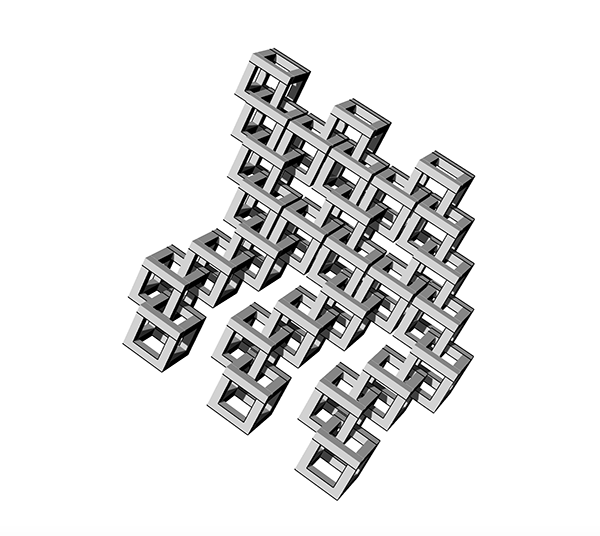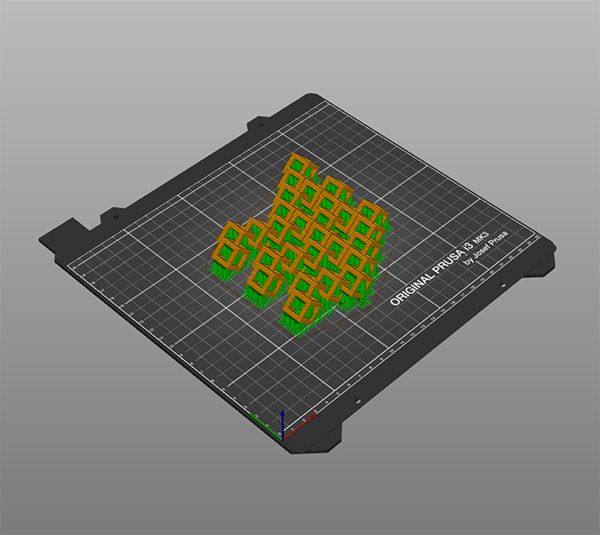During this week, the group project was addressed by printing a test part, which investigated maximum bridging angles, along with printable degrees of curvature and other parameters. Among these, we identified that the print file we utilized contained two extruded rings with 14/10 and 8/4 mm circles respectively. Upon measuring these, the scale of this print was not accurate and thus led us to believe we may need to calibrate our 3D software with the Prusa printer. Another possibility may be that the nozzle end was different in size from the nozzle size that the printer expected, however, the accuracy was otherwise far too crisp for this to be likely.
TEST PART:
As part of the 3D Scanning exercise, we reviewed the functionalities of the Artek 3D Scanner with Jeremy Guillette. He explained the usefulness of multiple cameras with light being shot and reflected off of the scanned objects, along with how we can obtain an optimal result from the Artek Scanner.
3D SCANNING:


I chose to scan a ceramic component from a project I worked on in the past with the Sabin Lab at Cornell. This component was originally designed in the Rhino/Grasshopper environment, then translated into two contrapositive molds and 3D printed. Once the molds were printed, positives were cast from the 3D printed parts and slip was then poured into the molds. To keep the dialogue going, I felt as though it would only be fitting to then 3D scan and 3D print the component again, with an interest in observing inconsistencies and imperfections across the translations.
3D PRINTING:
I developed a series of cubic frame geometries, which were nested within one another for printing on the Prusa machines. Translating the NURBS model from Rhino to an STL is typically quite straightforward, however, I was having issues with corners at .0001mm resolution. After making the geometry more precise and rebuilding the surfaces, I was able to successfully open the geometry in Prusa's slicing software. Three different strategies were attempted for support material, however, the printer has failed now each time before getting halfway through the print. It is possible that the geometry is flawed, however, I think more likely would be the possibility of unsupported material causing issues with the nozzle (and therefore I may need to make the supports more robust).
FAILURES:

